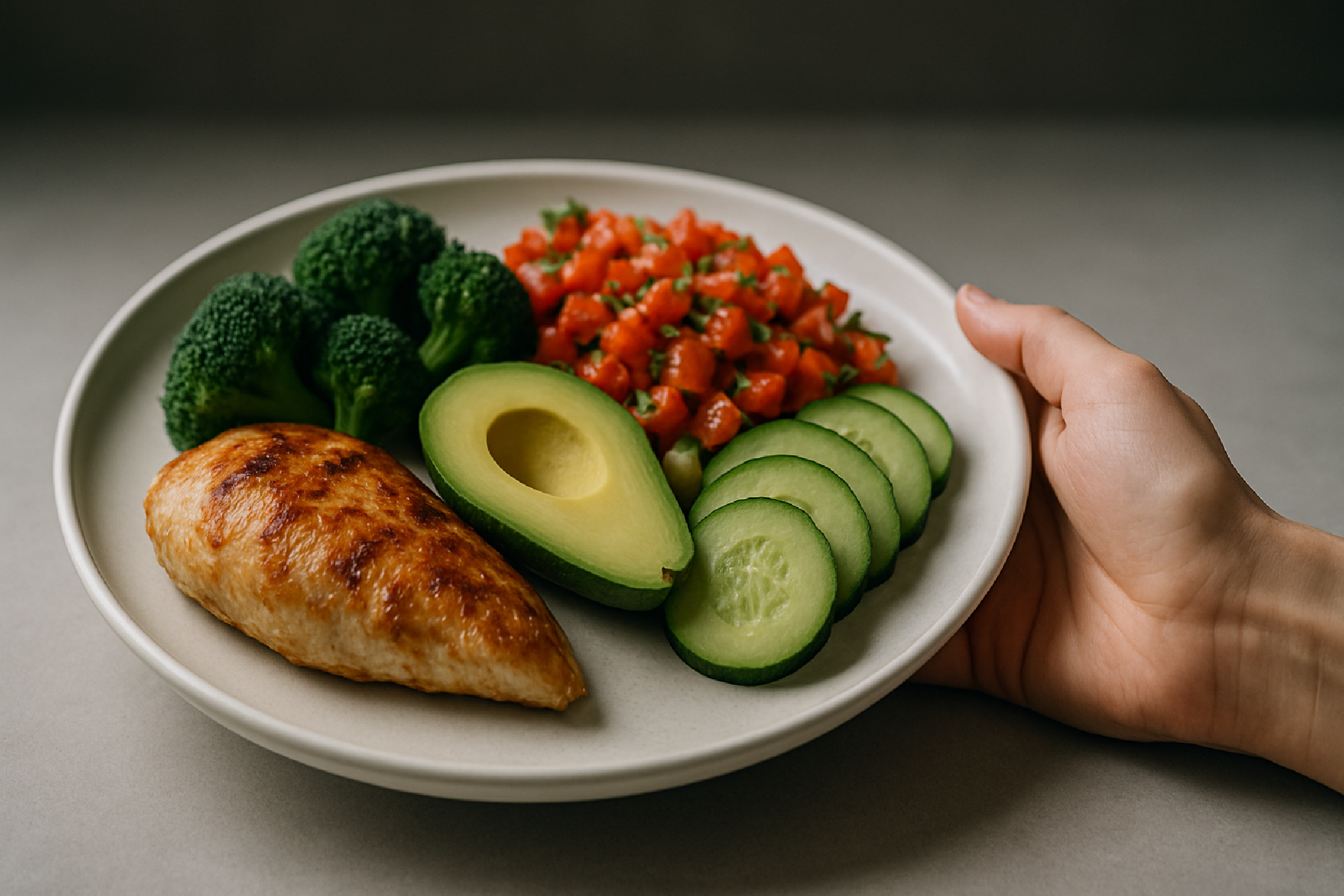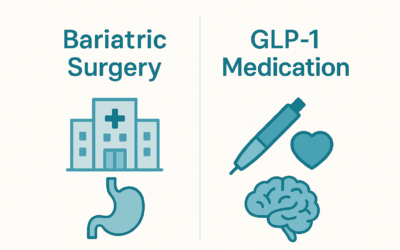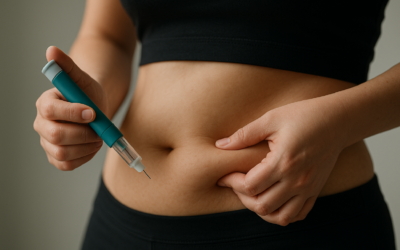You’ve started a new chapter in your health journey with a GLP-1 medication like Ozempic or Wegovy. It’s an exciting step towards achieving your weight management goals and improving your overall well-being. But you might be wondering: what’s next? How can I make the most of this treatment?
The answer lies in your diet.
Many women we work with at Claya feel a sense of uncertainty when they start a GLP-1. They know the medication is a powerful tool, but they’re not sure how to pair it with the right lifestyle changes. They’ve been told to “eat healthy,” but what does that actually mean in this new context? Does it mean endless salads and giving up all the foods you love?
This uncertainty can be a significant pain point. You’re investing time, energy, and hope into this treatment, and you want to do everything right. The last thing you want is to feel like you’re not supporting your body in the best way possible, or worse, to have the medication’s effectiveness hindered by your diet.
Let’s tell a story we hear often. A woman, let’s call her Sarah, started a GLP-1 medication to help manage her PCOS. At first, she was thrilled. The number on the scale was going down. But she was also dealing with persistent nausea and fatigue. She was eating less, but she was relying on simple, easy-to-grab foods like crackers and toast. She was losing weight, but she wasn’t feeling well.
Sarah’s story is common. It highlights a crucial truth: medication alone is only half the equation. The food you put on your plate is the other half. It’s the fuel that will help you feel energized, manage side effects, and achieve sustainable, long-term results.
This article is your guide to that other half of the equation. We’ll walk you through the principles of a GLP-1-friendly diet, not as a set of rigid rules, but as a flexible framework designed to nourish your body and help you thrive.
Understanding GLP-1s and Your Body
Before we dive into the specifics of what to eat, let’s quickly recap how these medications work and why diet is so important.
How GLP-1 Agonists Work for Weight Management
GLP-1 (glucagon-like peptide-1) is a natural hormone your body produces. It plays a key role in regulating your appetite and blood sugar. GLP-1 agonist medications mimic this hormone, but at a more powerful and sustained level.
According to a study published in the Journal of Endocrinology, these medications work in a few key ways:
- They slow down gastric emptying: This means food stays in your stomach longer, helping you feel fuller for longer.
- They target the appetite centers in your brain: This reduces hunger and cravings.
- They help your pancreas release insulin more effectively: This improves blood sugar control.
The result is a powerful effect on appetite and calorie intake, which leads to weight loss.
Why Diet is Crucial for Success on GLP-1s
While GLP-1s are effective at reducing your appetite, they don’t automatically ensure your body gets the nutrients it needs. Because you’re eating less, it’s more important than ever to make every bite count.
A well-planned diet while on a GLP-1 will help you:
- Preserve lean muscle mass: When you lose weight, you can lose both fat and muscle. A protein-rich diet helps protect your muscle.
- Manage side effects: Common side effects like nausea and constipation can often be managed or even prevented with the right dietary choices.
- Optimize your nutrient intake: With a reduced appetite, you need to focus on nutrient-dense foods to get the vitamins and minerals your body needs to function at its best.
- Build sustainable habits: The goal isn’t just to lose weight, but to keep it off. A healthy eating pattern is a skill that will serve you long after you’ve finished your course of medication.
The Claya Philosophy: A Personalized Approach to Your GLP-1 Diet
At Claya, we specialize in helping women with complex health conditions like PCOS and Endometriosis. We know that a one-size-fits-all approach to health doesn’t work. Your body, your lifestyle, and your needs are unique.
Beyond Calories: Focusing on Nutrient-Dense Foods
While GLP-1s will help you naturally reduce your calorie intake, we encourage you to shift your focus from calorie counting to nutrient density. Instead of asking, “How many calories are in this?” ask, “What nutrients is this food giving me?”
This mindset shift is empowering. It turns food from something to be restricted into something to be celebrated for its ability to nourish and heal your body.
“In our work with clients…”
In our work with clients at Claya, we’ve seen firsthand the transformative power of pairing GLP-1 medication with a personalized, nutrient-dense diet. We’ve seen women not only reach their weight goals but also experience a dramatic improvement in their energy levels, mood, and overall quality of life. They stop feeling like they’re just surviving and start feeling like they’re thriving. This is the ROI we aim for.
Building Your Plate: What to Eat on a GLP-1 Diet
So, what does a nutrient-dense, GLP-1-friendly plate look like? Let’s break it down.
Prioritize Protein for Satiety and Muscle Health
Protein is your number one ally on this journey. It’s the most satiating macronutrient, meaning it helps you feel full and satisfied after a meal. This is especially important when your appetite is reduced.
Aim to include a source of lean protein in every meal. Excellent sources include:
- Skinless chicken or turkey breast
- Fish (especially fatty fish like salmon for their omega-3s)
- Eggs
- Greek yogurt
- Tofu and tempeh
- Lentils and beans
Fiber-Rich Foods to Manage Side Effects
Fiber is another key player. It helps with digestion, which can be a challenge for some on GLP-1s. There are two types of fiber, and you need both:
- Soluble fiber: This type dissolves in water to form a gel-like substance. It can help soften stool, making it easier to pass. Good sources include oats, barley, apples, and carrots.
- Insoluble fiber: This type does not dissolve in water. It adds bulk to the stool, which can help with regularity. Good sources include whole grains, nuts, beans, and vegetables like cauliflower and green beans.
Healthy Fats for Hormonal Balance
Fat has been unfairly demonized for years. The truth is, healthy fats are essential for your health, especially for hormone production and the absorption of fat-soluble vitamins.
Focus on unsaturated fats from sources like:
- Avocado
- Olive oil
- Nuts and seeds
- Fatty fish
Foods to Minimize for Better Results
Just as important as what you eat is what you limit. Certain foods can exacerbate side effects like nausea and acid reflux.
Greasy, Fried, and Sugary Foods
High-fat, greasy, and fried foods are hard to digest and can make you feel sluggish and nauseous. Highly processed and sugary foods can cause spikes and crashes in your blood sugar and offer little nutritional value.
Try to limit:
- Fast food
- Fried foods (french fries, fried chicken)
- Sugary drinks (soda, sweetened teas)
- Candy, cookies, and pastries
Carbonated and Sugary Drinks
Carbonated drinks can introduce excess air into your digestive system, leading to bloating and gas. Sugary drinks are a source of empty calories and can contribute to blood sugar fluctuations. Stick to water, herbal teas, and other unsweetened beverages.
A Sample 1-Day GLP-1 Meal Plan
Here’s a look at what a day of eating could look like. Remember, this is just a template. Adjust portion sizes based on your own hunger and fullness cues.
- Breakfast: Scrambled eggs with spinach and a side of whole-wheat toast.
- Lunch: A large salad with grilled chicken, mixed greens, cucumber, tomatoes, and a light vinaigrette dressing.
- Dinner: Baked salmon with roasted broccoli and a small portion of quinoa.
- Snack: Greek yogurt with a handful of berries and almonds.
Beyond Diet: Lifestyle Tips for GLP-1 Success
The Role of Exercise
Regular physical activity is a crucial partner to your diet. It helps you build and maintain muscle mass, boosts your metabolism, and improves your mood. Aim for a combination of cardiovascular exercise (like brisk walking or cycling) and strength training.
Hydration is Key
Staying hydrated is essential for managing side effects like constipation and for your overall health. Aim to drink at least 8 glasses of water a day.
Get Personalized Support with Claya
Navigating your health journey on a GLP-1 medication can feel overwhelming, but you don’t have to do it alone. At Claya, we provide personalized, one-on-one support to help you create a diet and lifestyle plan that works for you.
Our team of experts understands the unique challenges and opportunities that come with GLP-1 treatments, especially for women managing conditions like PCOS and endometriosis. We can help you optimize your diet, manage side effects, and achieve the lasting results you deserve.
Ready to take the next step? Get started with Claya today and discover how personalized care can transform your health journey.



